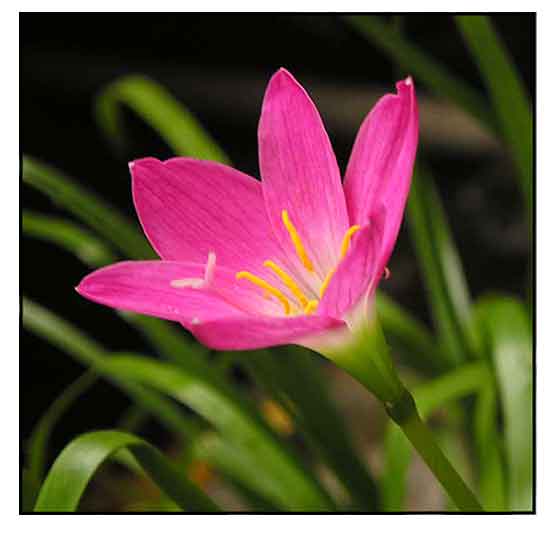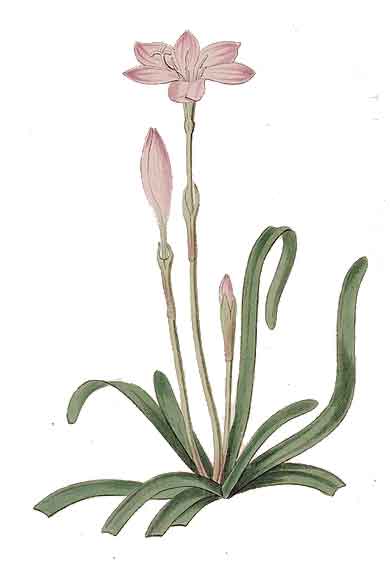
Family • Amaryllidaceae
Rain lily
Zephyranthes rosea Lindl.
STORM LILY / PINK RAIN LILY
| Scientific names | Common names |
| Amaryllis carnea Schult. & Schult.f. | Cuban zephyrlily (Engl.) |
| Amaryllis rosea (Lindl.) Spreng. | Fairy lily (Engl.) |
| Atamosco rosea (Lindl.) Greene | Lily grass (Engl.) |
| Hippeastrum carneum (Schult. & Schult.f.) Christenh. & Byng | Pink rain lily (Engl.) |
| Zephyranthes carnea (Schult. & Schult.f.) D.Dietr. | Rain lily (Engl.) |
| Zephyranthes rosea Lindl. | Rose fairy lily (Engl.) |
| Rosy rain lily (Engl.) | |
| Storm lily (Engl.) | |
| Zephyr lily (Engl.) | |
| The common name "Pink rain lily" is shared with Zephyranthes carinata. | |
| Zephyranthes rosea Lindl. is an accepted species. KEW: Plants of the World Online | |
| Other vernacular names |
| FRENCH: Lis zéphyr rose. |
| GERMAN: Rosafarbene, Windlbume. |
| SPANISH: Duende rojo, Leli de San Jose. |
| VIETNAMESE: Tóc tiên hồng. |
Updated July 2023 /
Dec 2018 / Mar 2017 / Oct 2015
March 2012
![]()
 |
PHOTOS / ILLUSTRATIONS |
| IMAGE SOURCE: Photo: File:Zephyranthes rosea.jpg / File:Zephyranthes rosea.jpg / potocraze / CC BY-SA 2.0 / click on link or image to go to source page / Wikipedia |
| OTHER IMAGE SOURCE: Zephyranthes rosea flower / Bermard Loison / CC BY-SA 2.5 / click on image or link to go to source page / Wikipedia |
| OTHER IMAGE SOURCE: Illustration: Zephyranthes rosea / Botanical Register: Colored figures of exotic plants cultivated in British Gardens / 1824 / Public Domain / click on image or link to go to source page / Wikipedia |
Additional
Sources and Suggested Readings |
• |
DOI: It is not uncommon for links on studies/sources to change. Copying and pasting the information on the search window or using the DOI (if available) will often redirect to the new link page. (Citing and Using a (DOI) Digital Object Identifier) |
| List of Understudied Philippine Medicinal Plants |
• |
 |
• |




